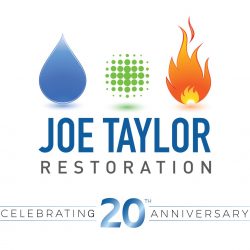Mold Inspection and Remediation
Date
Tuesday, October 20, 2020
Date
Tuesday, October 20, 2020
 Mold and mildew are everywhere. They are naturally occurring microorganisms that exist outside, breaking down dead organic matter, such as fallen leaves, and constantly releasing tiny spores in order to reproduce. These same spores also exist inside our homes and business on a variety of surfaces. They generally do not present a problem, until the surfaces become wet, and mold and mildew begin to grow.
Mold and mildew are everywhere. They are naturally occurring microorganisms that exist outside, breaking down dead organic matter, such as fallen leaves, and constantly releasing tiny spores in order to reproduce. These same spores also exist inside our homes and business on a variety of surfaces. They generally do not present a problem, until the surfaces become wet, and mold and mildew begin to grow.
There are many types of mold, and none of them will grow without water or moisture. Some types of mold are relatively non-toxic, though they can still cause allergic reactions and other medical issues. But other types, such as black mold, can be extremely toxic and must be removed immediately to avoid health risks.
You may already be experiencing some of the symptoms of living with mold, such as: asthma, headaches, and watery eyes. And as a result, you suspect that you have mold in your home or business.
If you think you have a mold problem, the first thing you need to do is a personal mold inspection. Upon simple investigation, if you see or are certain that you smell mold, it is important that you contact a licensed, certified mold remediation company immediately, like Joe Taylor Restoration. However, if you do not see or smell mold immediately, you may need to investigate further. Mold is very good at hiding, so you may need to perform a thorough mold inspection in order to discover it.
Some places you will need to check are:
• windows, roofs, and gutters (the constant supply of water gives mold spores the start they need)
• areas with poor ventilation that may have moisture buildup from multiple house plants, appliances that produce moisture, etc.
• areas where there was water damage (that perhaps were not properly dried)
• the undersides of carpets and pads
• the surface of walls behind furniture where condensation can form
• the backsides of dry wall, wallpaper, or paneling
• the top sides of ceiling tiles
• inside walls around pipes that produce condensation
• area around the air conditioner
• inside ductwork
Use both your nose and your eyes to check each surface. Mold may appear velvety, cotton-like, grainy, or leathery and can vary in color from black, white, gray, purple, brown, yellow, or green.
Look for signs of excessive moisture or water damage such as standing water, and discoloration on the carpets, walls, ceilings, or woodwork. If you find an area with a noticeable mold odor or one that has water damage, you may need to use destructive techniques to inspect enclosed areas, such as behind the baseboards, where mold could be concealed.
If this kind of investigation sounds overwhelming, another option is to contact a professional for a mold inspection. Joe Taylor Restoration can arrange for the appropriate mold testing. We can also provide any mold remediation services that are necessary based upon inspection results.
Whether you have discovered mold in your home or business, or you simply suspect that there is a problem, do not hesitate to contact Joe Taylor Restoration. The sooner you call, the sooner you know for sure that your home or work environment is as healthy as it can be.

